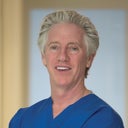Posted underLaser Resurfacing q&a
I have thin skin and have had laser 13 years ago. Will another treatment make my skin thinner?
Answers (5)
From board-certified doctors and trusted medical professionals

Dr. John J. Martin, Jr., MD
Oculoplastic Surgeon, Board Certified in Ophthalmology
Answer
Dr. Kimberly Lee, MD
Facial Plastic Surgeon, Board Certified in Otolaryngology – Head and Neck Surgery
Answer
Dr. Mark Taylor, MD
Dermatologic Surgeon, Board Certified in Dermatology
Answer
More Laser Resurfacing Questions
See all Laser Resurfacing Q&AWE SEND PRETTY
EMAILS
What’s trending? Who’s turning heads? Which TikTok myths need busting? We’ve got you. No fluff, no gatekeeping—just real talk. Get our free, unfiltered newsletter.
